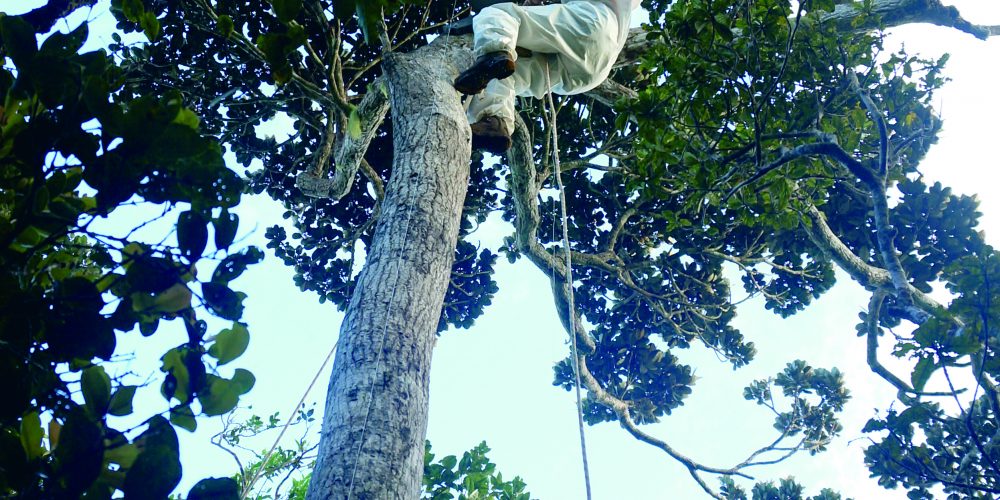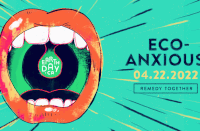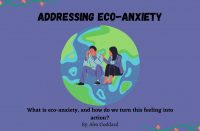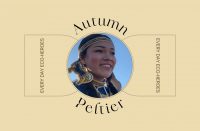Avoid the office. And help save the planet. These were Laura King’s guiding principles when she began her studies in wildlife biology. She couldn’t have known they would lead her on a mission to the Indian Ocean to serve as Canada’s New Noah. King is the latest Noah in a tradition which, for almost 30 years, has been protecting Canada’s diversity.
Avoid the office. And help save the planet. These were Laura King’s guiding principles when she began her studies in wildlife biology. She couldn’t have known they would lead her on a mission to the Indian Ocean to serve as Canada’s New Noah. King is the latest Noah in a tradition which, for almost 30 years, has been protecting Canada’s diversity.
Imagine the worst case scenario 70 years from now. The unending expanse of trees and lakes in Northern Ontario contain no wildlife at all. The ocean is an empty promise with nothing but seaweed and garbage, and the same for the mountains, prairies and rainforests of the West.
Seems far-fetched? Consider:
• In 2014, the World Wildlife Fund stunned the globe when they published their findings that the planet’s biodiversity had dropped by 52 percent since 1970. The International Union for Conservation of Nature’s (IUCN) Red List Index (an indicator that keeps track of global ecological diversity), reports downward population trends for all of its fully assessed animal groups.
• The Committee on the Status of Endangered Wildlife in Canada (COSEWIC) recommends 739 species for legal protection, while Environment and Climate Change Canada considers 77 percent of species within our borders not at risk, meaning 23 percent are at risk.
• One recent study from the University of Victoria found that the federal government’s measures to protect and replenish endangered species are ineffective. Since COSEWIC first began assessing species and recommending them for protection in 1977, the researchers found that only 20 species have recovered enough to be taken off the list completely, and five of these were due to increased sampling efforts.
This makes it plenty clear that our planet’s species – including us humans – are facing severe challenges. And this is where Canada’s New Noah comes in. Since 1990, Wildlife Preservation Canada (WPC), an organization dedicated to replenishing the country’s most threatened species, has sent one young wildlife biologist a year to Mauritius, the home of the iconic dodo bird and global hub of species conservation.
WPC grants the biologist, named the New Noah, a six-month scholarship to attend the internationally recognized Durrell Conservation Academy on the island.
When the scholarship was first offered, students split their time between Mauritius and the original training centre in Jersey, an island in the English Channel in the UK. Now, the Noah earns a formalized postgraduate diploma, a program for the world’s aspiring and established conservationists, in the recently established Mauritian campus.
The New Noah scholarship is inspired by the work of the late Gerald Durrell, an international conservation leader who founded what is now known as the Durrell Wildlife Trust, and later Wildlife Preservation Canada in Guelph, Ontario, as the Canadian arm of the organization.
Canada’s New Noah position is named for two of Durrell’s most influential books, The Stationary Ark and The New Noah. In them he gives a modern interpretation of the religious character, Noah, who saved all the Earth’s animals from a flood by putting two of every kind in a large boat.
In Mauritius, the Noahs learn the skills necessary to preserve species, and are charged with practising them upon their return to Canada.
But why must biologists travel to Mauritius to learn how to preserve Canada’s species?
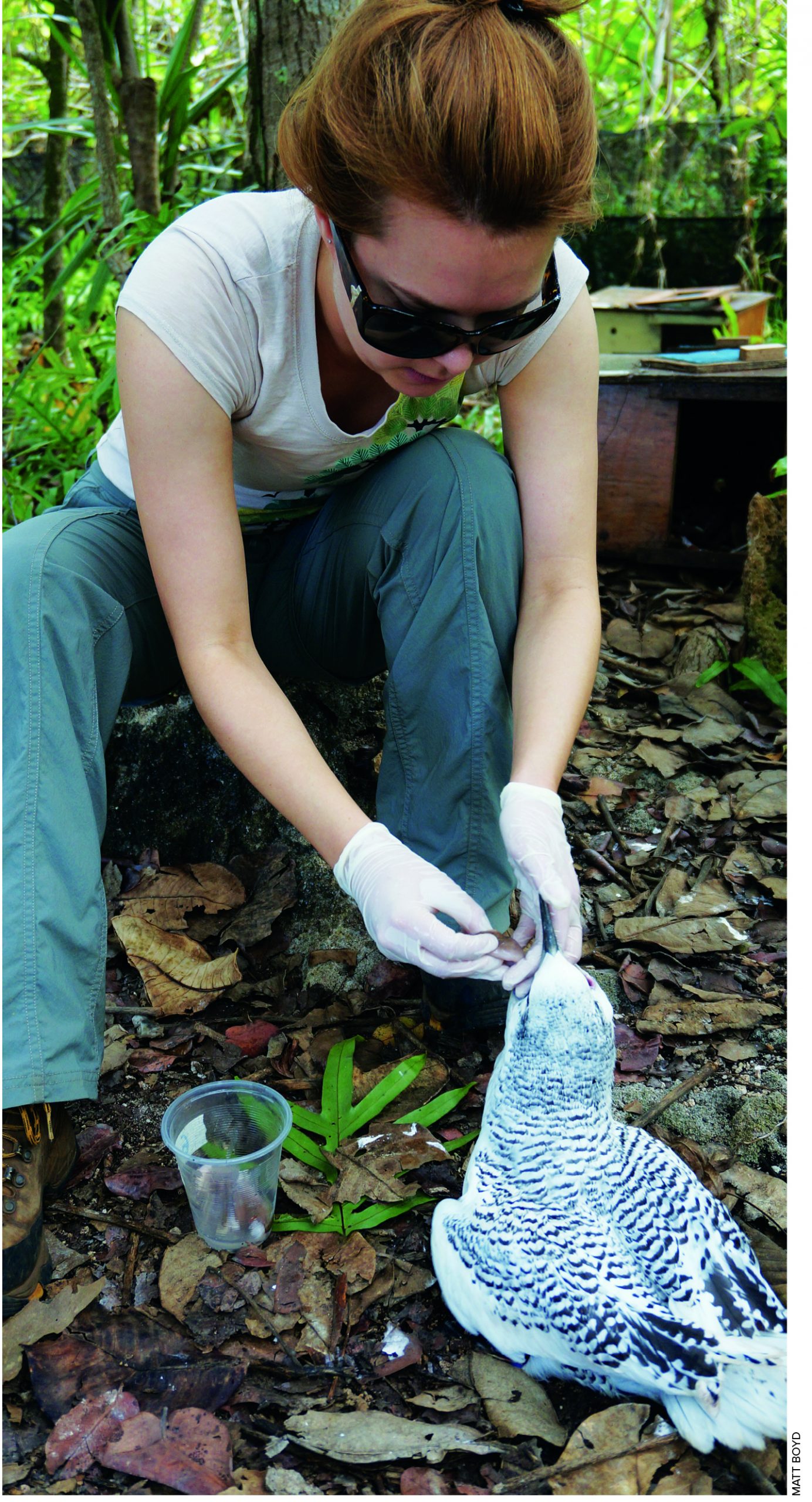
Laura King feeds pieces of squid to a juvenile red-tailed tropicbird (Phaethon rubricauda) on Ile aux Aigrettes, Mauritius.
When habitat conservation is ineffective, Canada relies on the specialized skills of species conservation scientists. These people must directly intervene and somehow regenerate disappearing populations. But it’s not as easy as it sounds. And it’s not easy finding a way to learn.
While Canada’s formal education system excels at establishing scientific foundations, students are often left tracking down opportunities for the other pieces of their conservation education. Often, these opportunities are costly, underpaid or unpaid.”
Gerald Durrell was an early authority on species conservation training. He believed saving species from extinction was as much art as science.
The world’s conservation authority, the International Union for Conservation of Nature, also emphasizes a collaboration of biology and social skills in order to preserve biodiversity.
The IUCN’s format for species conservation strategies highlights three key elements: an understanding of the ecology of the species in question to recognize when the species is stable, development of a plan to achieve population stability, and an emphasis on multistakeholder participation.
Arguably, those aiming to be an expert in species conservation will need to be trained in all three elements. They must have solid biological knowledge, practice in preservation techniques and a host of soft skills needed to coordinate projects across the societal stratum.
While Canada’s formal education system excels at establishing scientific foundations, students are often left tracking down opportunities for the other pieces of their conservation education. Often, these opportunities are costly, underpaid or unpaid.
Patrick Moldowan, last year’s Noah, is frustrated by the lack of practical training in formal conservation education. “Students are coming out of a lot of programs with a really well grounded basis in theory … but a lot of students maybe aren’t so familiar with what that actually looks like on the ground. If you have a theory, how do you use it?”
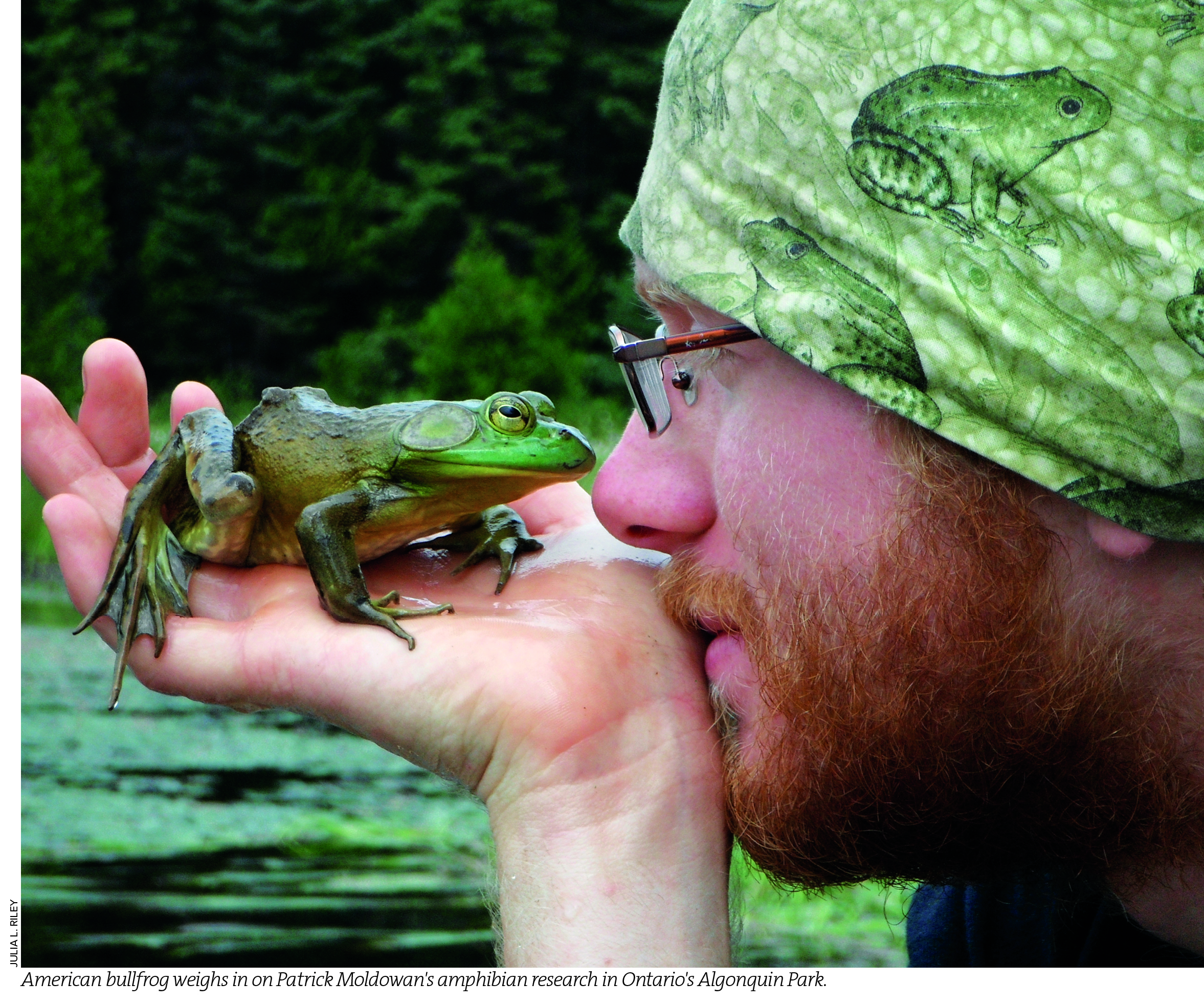
Species-led wildlife preservation involves a range of highly specific techniques and methods, like the ability to recognize species in the wild, track and find them, move them from one place to another, “head-start” or raise them in captivity to a certain age before release, use geolocators to trace movements, create artificial breeding grounds … to name a few. Species conservation scientists must know a variety of methods in order to select and adapt the best practice for their projects.
This type of work is rarely taught hands-on in formal graduate programs. Most courses include some field-work, but this is not usually tailored to species-led preservation. Instead, this is usually acquired once students find themselves on the job. Moldowan feels this can be a disservice. “When a lot of students are getting out into the forest, or the lake, or the desert or wherever they may be working, they’re confounded by a whole new series of challenges that maybe they’ve never encountered earlier in their studies.”
While theory and practice are two essential aspects of conservation education, they aren’t the only skills needed.
One recent study published in Conservation Biology analyzed conservation job advertisements in government, non-profit and private sectors. The researchers found that besides practical scientific knowledge, 74 percent of the advertisements were also devoted to nondisciplinary skills including project management, interpersonal skills, written communication, program leadership and networking. Targeted interviews with industry professionals in charge of hiring yielded similar results. The authors write, “This discrepancy between academic training and professional needs can make it difficult for graduate students to identify the skills and experiences that will best prepare them for the conservation job market.”
For almost 30 years, WPC has quietly bridged this discrepancy by sending students to study at the Durrell Conservation Academy through its New Noah program.
The postgraduate diploma in endangered species recovery is accredited through the UK’s University of Kent, and taught by world leaders in conservation science. The course is divided into several modules covering biology and ecology of small populations, recovery techniques, leading conservation projects, education and stakeholder management, and a research project in species recovery.
Students are exposed to a passionate, international community of people dedicated to saving the world’s wildlife. They learn a host of skills, both technical and soft, often neglected in traditional science-based programs.
“What we need across Canada…is a national commitment to species recovery that’s as firm and comprehensive as our existing commitment to habitat preservation.”
While the New Noah program does help one lucky grad build an outstanding resume, it’s also doing something more important: breaking down, a little more with each additional Noah, the disassociation between studying conservation issues and creating their solutions.
Among the sunbeams coming through Kelly green palms, Laura King pushes her boundaries as a scientific professional. Whether she’s climbing trees in full hazmat gear to find parakeets, or learning about volunteer management in the classroom, each week strengthens her confidence.
“You know, before [the New Noah program] I knew how to take samples and do T-tests and run a scientific research project, but I did not know how to achieve conservation.”
She admits, “It sounds cheesy, but especially going to big Canadian research-intense universities, you kind of float around in the middle. You never feel like a leader. You never really stand out. To come on something like this [New Noah program] that develops you in so many ways – week after week you’re getting new skills – it sort of changes how you see yourself and so you start to think you could lead conservation projects too.”
This is the true legacy of the New Noah program. Year after year, Canada’s New Noahs have had their eyes opened not only to the skills, but to the necessary integrative points of view to be leaders.
Dave Stepnisky is the director for Alberta’s fish and wildlife habitat policy. He was the New Noah in 1998. “The program changed my life. I truly mean that,” he writes. “I used to look at species conservation issues through only a scientific lens: fix the problem that is causing the decline and recover a species. Simple, right? … I learned very quickly that conservation problems need to look at the social and economic drivers that are forcing human behaviours, to look at the governments and industries operating in a country and figure out collaborative ways to reach your goals. Most importantly, I learned that local people are the key to success. This has spilled over into my present career.”
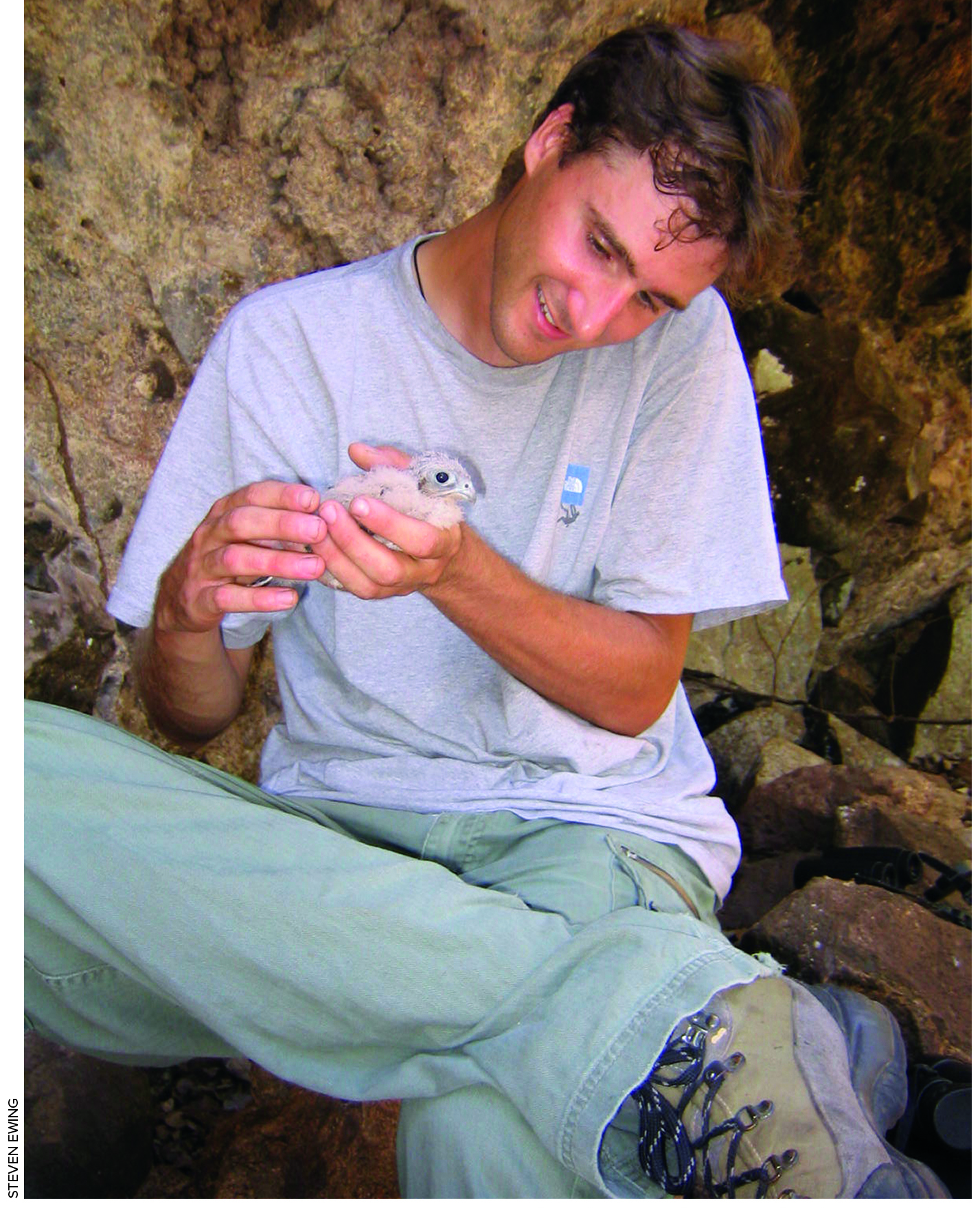
Dave Stepnisky holds a Mauritius kestrel during his time as a New Noah
Every Noah reports returning from Mauritius with the same perspective and capability to lead conservation projects. Now, more than ever, Canada needs inspired leaders in species-led preservation.
Wildlife Preservation Canada estimates between 30 and 40 percent of Canada’s species at risk require direct population intervention in order to survive. Habitat protection will not be enough to save them, although it is critical. They predict this number will only rise with the increasing impacts of climate change and environmental degradation.
Most conservation activities focus on maintaining larger sections of habitat to keep whole ecosystems intact. These are called in situ, or “onsite” species preservation efforts because the species are conserved in their natural environment. In situ methods are considered the most effective conservation strategies and are largely given priority.
Traditionally, ex situ or “offsite” preservation techniques involving captive breeding have been seen as secondary in the larger conservation movement because of the invasive nature, cost, decades-long time commitments and relatively inconsistent or even complete lack
of results.
Ex situ conservation is a last-resort method, but unfortunately its role in today’s conservation efforts is recognized to be growing.
The UN’s updated strategy for plant conservation includes a target of maintaining a hefty 75 percent of global threatened species in captive collections, while The IUCN recognizes the increasingly valuable role of ex situ techniques, reflected in the 2014 updated Guidelines for the Use of Ex Situ Management for Species Conservation.
“[Species intervention] may seem very invasive,” says WPC’s conservation program director, and 2005 New Noah, Jessica Steiner, “but it’s a choice between doing something, or seeing that species disappear.”
Ex situ preservation has been used many times in dire situations to bring species back from the edge of extinction in Canada and around the world. Perhaps most famously in Canada is the work of Richard Fyfe, a pioneer conservation scientist who also helped found the New Noah program.
Fyfe conducted his ground-breaking work to breed and release anatum subspecies of peregrine falcons in the 1970s when the techniques were still ridiculed. This resulted in a stock of birds able to thrive long enough in captivity to outlast the remnants of DDT and eventually repopulate.
Current examples include the ongoing work with the northern leopard frog in British Columbia and Alberta or the Antillean manatee in Brazil.
Steiner argues that these techniques can work hand-in-hand with habitat conservation as another tool in the preservation toolbox. She says scientists need to know how to conduct species intervention techniques well so they can be applied effectively when needed.
This has been WPC’s mission since its inception: to develop capacity for species-led conservation. Working towards this goal, one main priority is training and leadership development, bringing us back to the New Noah program.
“This training in Mauritius is leading Canadian conservation projects,” says King. “Almost thirty Canadian biologists have been through this. We’re everywhere; we’re in pretty much every province. We’re leading NGOs and leading government. And we’ve all come from this tiny little island.”
“What we need across Canada,” writes Randal Heide, WPC’s educational director, “is a national commitment to species recovery that’s as firm and comprehensive as our existing commitment to habitat preservation.”
This commitment must start at the educational level. The New Noahs consider themselves lucky for the opportunity they’ve been given, but as the “extinction clock” counts down, there is no more time to leave comprehensive and motivational training in species preservation to luck.
As the pressure mounts to save the country’s species, Canada must provide students with the tools they need to perform species conservation, and infuse them with a sense of leadership and inspiration.
This will result in a culture of responsibility in conservation education. But why stop there? A culture of leadership and responsibility for biodiversity in our country must exist in every sector. What we need, in fact, is to become a nation of Noahs.
Leah Gerber has always been pretty nosy. Sometimes she still has trouble distinguishing between being curious and being rude. She loves exploring Canada’s nooks and crannies, especially on a bicycle. Her goal is to tell stories, visually and with words, that inspire change in our world, even just a little.


